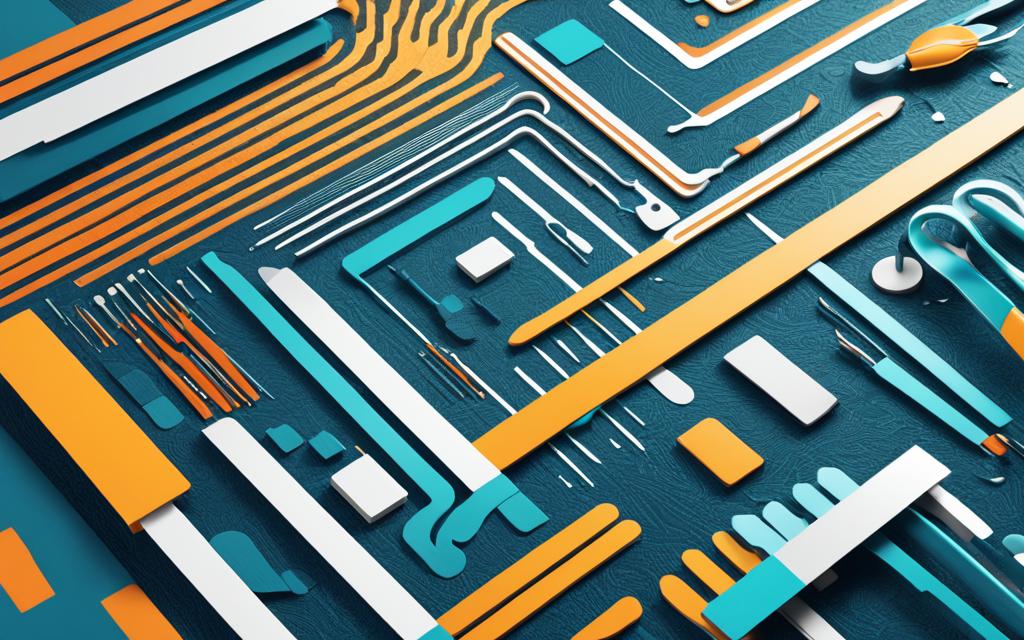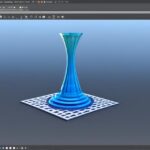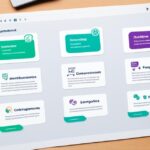Table of Contents
In the ever-evolving world of software development, the landscape of modern design tools and software has become increasingly complex and multifaceted. Gone are the days when developers only needed expertise in a programming language and a few design patterns. Today, navigating this landscape requires a broad spectrum of skills and knowledge, including proficiency in development frameworks, programming language features, scripting languages, cloud platforms, Agile methodology, DevOps pipelines, ETL tools, databases, frontend frameworks, operating systems, and design patterns. This rapid expansion of required skills poses challenges for both experienced and junior developers. However, embracing this complexity is essential for staying relevant and thriving in the dynamic environment of modern software development.
As technology continues to evolve at a rapid pace, the need for software product modernization has become crucial for staying competitive in the market. CEOs, CTOs, and VP Engineering/Head of Software Development must make informed decisions when choosing the right technology stack and architectural format for their modernization journey. Key considerations include assessing the current tech stack, understanding modern requirements, staying ahead of industry trends, leveraging team expertise, and evaluating costs. In terms of architectural evolution, organizations need to choose between a monolithic or microservices architecture, plan a meticulous decomposition strategy, decide on the data management approach, design robust APIs, prioritize security, integrate DevOps practices, consider containerization and orchestration, opt for modern frontend frameworks, and embrace monitoring and analytics. By carefully considering these factors, organizations can ensure a seamless transition into the future and create future-ready products.
The Evolution of Modern Web Application Development
Modern web application development has undergone a significant transformation, driven by advancements in technologies, frameworks, and methodologies. Developers must adapt to these changes in order to stay ahead in the rapidly evolving landscape. Key aspects shaping the contemporary web development ecosystem include:
- The prioritization of responsive design to ensure seamless user experiences across different devices and screen sizes.
- The rise of progressive web applications (PWAs), combining the best features of websites and native mobile apps to provide offline access, push notifications, and app-like experiences.
- The use of popular JavaScript frameworks and libraries like React and Angular to enable efficient development and facilitate code reuse.
- The adoption of an API-first approach and microservices architecture, allowing for flexibility, scalability, and modular development.
- The utilization of containerization technologies like Docker and serverless computing platforms such as AWS Lambda, enabling developers to deploy and scale applications with ease.
- The implementation of real-time functionality through technologies like WebSockets, enabling applications to deliver instant updates and interactive features.
- The focus on security and performance optimization, ensuring that web applications are secure against vulnerabilities and deliver optimal performance.
By understanding and embracing these trends, developers can leverage modern web application development techniques to create applications that deliver enhanced user experiences, simplified development processes, and improved scalability and performance. The evolution of web application development has opened up new possibilities and paved the way for innovative solutions, empowering businesses to thrive in the digital era.
Embracing Technology in Software Product Modernization
As technology continues to evolve at a rapid pace, the need for software product modernization has become crucial for staying competitive in the market. CEOs, CTOs, and VP Engineering/Head of Software Development must make informed decisions when choosing the right technology stack and architectural format for their modernization journey.
Key considerations include:
- Assessing the current tech stack
- Understanding modern requirements
- Staying ahead of industry trends
- Leveraging team expertise
- Evaluating costs
In terms of architectural evolution, organizations need to:
- Choose between a monolithic or microservices architecture
- Plan a meticulous decomposition strategy
- Decide on the data management approach
- Design robust APIs
- Prioritize security
- Integrate DevOps practices
- Consider containerization and orchestration
- Opt for modern frontend frameworks
- Embrace monitoring and analytics
By carefully considering these factors, organizations can ensure a seamless transition into the future and create future-ready products.
The Impact of Modern Design Tools Software in Various Industries
The integration of modern design tools software is not limited to the tech industry alone. Various industries, including the automotive industry and household appliances, have embraced technology to enhance their products and services.
In the automotive industry, cars have become intricate systems of software-driven components, from advanced driver-assistance systems to infotainment consoles.
This shift necessitates developers with expertise in traditional programming, embedded systems, and real-time processing.
Similarly, household appliances such as refrigerators, thermostats, and coffee makers have undergone a digital metamorphosis, relying on sophisticated software for enhanced features and connectivity.
Developers working on these products require knowledge in IoT, firmware development, and user interface design.
As industries across the board embrace digital transformation, the demand for skilled software developers continues to surge, highlighting the importance of understanding the intricate web of technologies, protocols, and design principles.
Impact of Modern Design Tools Software in Various Industries
| Industry | Impact |
|---|---|
| Automotive | Integration of software-driven components in cars, such as advanced driver-assistance systems and infotainment consoles, enhances safety and entertainment features. |
| Household Appliances | Sophisticated software in appliances like refrigerators, thermostats, and coffee makers enables enhanced features and connectivity, improving convenience and efficiency. |
| Other Industries | Digital transformation across industries drives the need for software developers with expertise in technology integration, contributing to improved products and services. |
Strategies for Successful Software Modernization
Successful software modernisation requires careful planning and implementation. To ensure a smooth transition, organisations should begin by conducting a comprehensive assessment of their current tech stack. This assessment will help identify outdated technologies and components that need to be updated or replaced.
Defining the functional and non-functional requirements of the product is a crucial step in the modernisation process. Factors such as scalability, performance, security, and integration capabilities need to be considered to meet the evolving demands of the market.
Staying ahead of industry trends and keeping an eye on emerging technologies is essential for making informed decisions during the modernisation process. By leveraging the expertise of the development team, organisations can evaluate the costs associated with adopting specific technologies and determine the most suitable options.
When it comes to architectural planning, organisations must choose between a monolithic or microservices architecture based on their scalability requirements and the complexity of the product. Careful decomposition and consideration of data management, APIs, security, DevOps integration, containers and orchestration, frontend frameworks, and monitoring and analytics are key strategies for successful software modernisation.
The Importance of Tech Stack Assessment
“A thorough tech stack assessment is the foundation of successful software modernisation. It allows organisations to identify outdated components, inefficiencies, and potential risks, ensuring the modernised system aligns with current and future business needs.” – John Smith, CTO of Tech Solutions Inc.
Architectural Planning for Scalable Solutions
Architectural planning plays a vital role in modernising software systems. Organisations must carefully evaluate the scalability requirements of their product to determine whether a monolithic or microservices architecture is the most suitable option. This decision will impact the flexibility, performance, and maintenance of the modernised system.
Consideration should also be given to data management strategies, API design, security measures, DevOps integration for continuous deployment, containerisation and orchestration for efficient resource utilisation, frontend frameworks for enhanced user experiences, and monitoring and analytics tools for performance optimisation.
Benefits of Successful Software Modernisation
- Improved scalability and flexibility
- Enhanced performance and responsiveness
- Increased security and compliance
- Streamlined workflows and reduced maintenance efforts
- Seamless integration with emerging technologies
Adopting these strategies for successful software modernisation can help organisations transform their legacy systems into future-ready solutions that meet the evolving needs of the market.
Benefits and Challenges of Embracing Modern Design Tools Software
Embracing modern design tools software brings numerous benefits to software development. These tools enhance overall productivity, simplify development processes, improve collaboration and communication among team members, and provide access to a wide range of features and functionalities. By adopting modern design tools software, developers can create innovative and powerful applications that meet and exceed user expectations.
Modern design tools software empower developers to streamline their workflows, enabling them to design and develop applications more efficiently. With intuitive interfaces and comprehensive toolsets, developers can easily prototype, iterate, and refine their designs. This improves productivity and allows for faster feedback loops, resulting in more polished and user-friendly applications.
Collaborative features in modern design tools software enable effective communication and seamless collaboration between designers, developers, and other stakeholders. Real-time commenting, design version control, and interactive prototyping facilitate efficient feedback loops and ensure that everyone is on the same page throughout the design and development process. This fosters better teamwork, reduces misunderstandings, and ultimately leads to more cohesive and successful projects.
Additionally, modern design tools software offer a vast array of features and functionalities that enhance the capabilities of developers. From libraries of pre-built components and reusable templates to advanced prototyping and animation tools, these software provide developers with the tools they need to create visually stunning and interactive user experiences. This allows developers to push the boundaries of design and create applications that leave lasting impressions on users.
“Embracing modern design tools software brings numerous benefits to software development. These tools enhance overall productivity, simplify development processes, improve collaboration and communication among team members, and provide access to a wide range of features and functionalities.”
While embracing modern design tools software offers many advantages, it also presents certain challenges. The rapid pace of technological advancements requires developers to continuously learn and adapt to new tools and technologies. This can be particularly challenging for both experienced and junior developers who need to invest time and effort into staying up-to-date with the latest advancements.
The complexity of modern design tools software may also pose challenges for developers. Learning and mastering these tools can be time-consuming, and the learning curve may be steep for developers who are new to the specific software. Moreover, the cost of hiring experienced developers who are proficient in modern design tools software is often higher due to the specialized skills and expertise required.
Nevertheless, the benefits of embracing modern design tools software far outweigh the challenges. By adopting these tools, developers can create visually stunning and highly functional applications that meet the demands of the modern digital landscape. Embracing the challenges with a proactive mindset and a commitment to continuous learning and innovation is key to thriving in the ever-changing field of software development.
The Benefits of Embracing Modern Design Tools Software:
- Enhanced productivity
- Simplified development processes
- Improved collaboration and communication
- Access to a wide range of features and functionalities
- Ability to create innovative and powerful applications
The Challenges of Embracing Modern Design Tools Software:
- Continuous learning and adaptation to technological advancements
- Complexity of modern design tools software
- Potentially higher cost of hiring experienced developers
Conclusion
The world of software development is constantly evolving, and a key aspect of this evolution is the landscape of modern design tools and software. With the increasing complexity and multifaceted nature of this field, developers need to possess a broad spectrum of skills and knowledge to navigate it successfully. From web application development to software product modernization, embracing advancements in technology is crucial for organizations aiming to create future-ready products.
By leveraging modern design tools and software, organizations can deliver enhanced user experiences, simplify development processes, and achieve improved scalability and performance. However, achieving successful software modernization requires careful planning and assessment of the current tech stack. It is essential to understand modern requirements, leverage the expertise of the development team, and evaluate costs to make informed decisions.
Choosing the right architectural format, embracing industry trends, and prioritizing factors such as security and performance optimization are vital to the success of software modernization. Although the complexity and challenges of modern design tools software may present obstacles, organizations that embrace this complexity with a proactive mindset and commitment to learning and innovation will stay competitive and thrive in the dynamic environment of software development.
FAQ
What skills and knowledge are required in the landscape of modern design tools and software?
Proficiency in development frameworks, programming language features, scripting languages, cloud platforms, Agile methodology, DevOps pipelines, ETL tools, databases, frontend frameworks, operating systems, and design patterns.
What are the key aspects shaping contemporary web development?
Responsive and user-centric design, progressive web applications (PWAs), JavaScript frameworks and libraries (e.g., React and Angular), API-first approach and microservices architecture, containerization and serverless computing, real-time functionality through WebSockets, and focus on security and performance optimization.
What considerations should be made when choosing the right technology stack and architectural format for software product modernization?
Assessing the current tech stack, understanding modern requirements, staying ahead of industry trends, leveraging team expertise, and evaluating costs. For architectural evolution, organizations need to choose between a monolithic or microservices architecture, plan a meticulous decomposition strategy, decide on the data management approach, design robust APIs, prioritize security, integrate DevOps practices, consider containerization and orchestration, opt for modern frontend frameworks, and embrace monitoring and analytics.
How are modern design tools software integrated into industries other than tech?
The automotive industry has integrated software-driven components such as advanced driver-assistance systems and infotainment consoles, while household appliances like refrigerators, thermostats, and coffee makers rely on sophisticated software for enhanced features and connectivity. These industries require developers with expertise in traditional programming, embedded systems, real-time processing, IoT, firmware development, and user interface design.
What strategies are important for successful software modernization?
Conducting a comprehensive assessment of the current tech stack, defining functional and non-functional requirements, staying ahead of industry trends, leveraging team expertise, evaluating costs, and choosing between a monolithic or microservices architecture. Key considerations include meticulous decomposition planning, data management, robust APIs, security prioritization, DevOps integration, containerization and orchestration, modern frontend frameworks, and monitoring and analytics.
What are the benefits and challenges of embracing modern design tools software in software development?
Benefits include enhanced productivity, simplified development processes, improved collaboration and communication, and access to a wide range of features and functionalities. Challenges include the need for continuous learning and adaptation due to technological advancements and the potential cost increase of hiring experienced developers.













